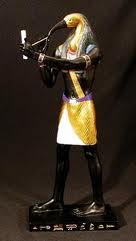The Prophecies of Hermes (Tehuti)
Pure philosophy is spiritual striving, through constant contemplation to attain True Knowledge of Atum the One –God. But, speaking now in prophecy, I say that in times to come, no one will pursue philosophy with single-mindedness and purity of heart. Those with a grudging and ungenerous temperament will try and prevent men discovering the priceless gift of immortality. Philosophy [Spirituality] will become confused, making it hard to comprehend. It will be corrupted by spurious speculation. It will be entangled with bewildering sciences like arithmetic, music and geometry.
The student of pure philosophy studies the sciences not as fanciful theories, but as devotion to Atum – because they reveal a universe perfectly ordered by the power of number; because measuring the depth of the sea and forces of fire and magnitude of physical things leads to a reverent awe at the Creator’s skill and wisdom; because the mysteries of music bear witness to the unsurpassed talent of the Supreme Artist who has beautifully harmonized all things into a single Whole, suffused with sweet melodies. Continue reading


 Tehuti
Tehuti

![X1 [t] t](https://i0.wp.com/worldafropedia.com/wiki/extensions/wikihiero/img/hiero_X1.png)

















Recent Comments